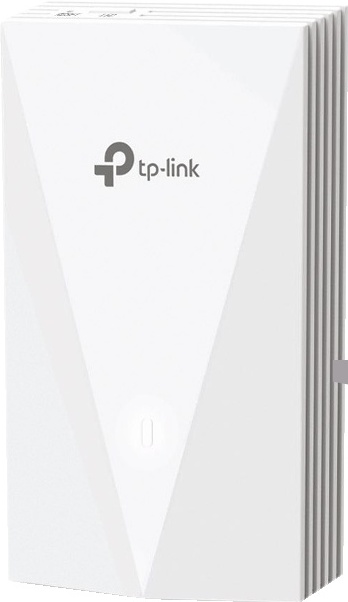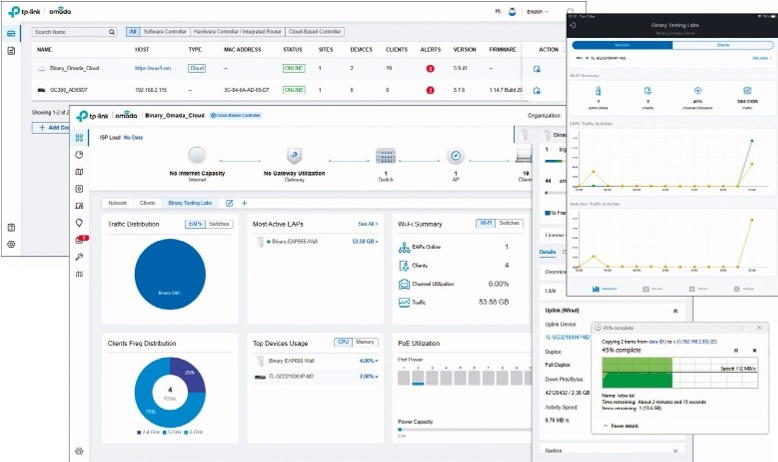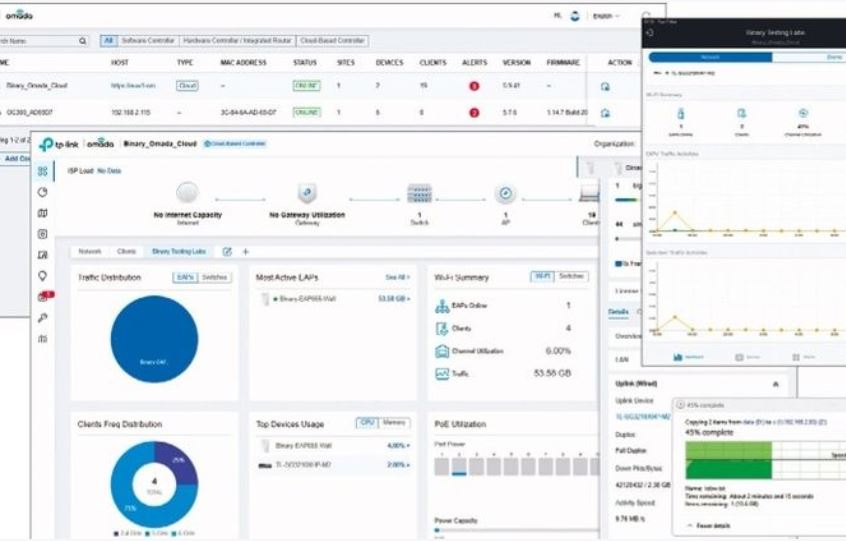Why you can trust TechRadar
This review first appeared in issue 345 of PC Pro.
TP-Link’s EAP655-Wall is designed to offer discrete Wi-Fi 6 services to a wide range of environments, such as meeting rooms, apartments and home offices. This affordable palm-sized package will also appeal to hotels looking to provide in-room network services as it has three gigabit ports in its base and can deliver PoE on the third one – ideal for adding extra room devices such as IP phones.
The EAP655-Wall offers plenty of features for the price. This AX3000 dual-band access point (AP) delivers speeds of up to 2,402Mbits/sec on its 5GHz radio and 574Mbits/sec on the 2.4GHz radio. It also supports the high-speed Wi-Fi 6 160MHz channels, although the AP’s main uplink port is only the gigabit variety so you won’t see their full potential.
Even so, the EAP655-Wall delivered good overall results in our real-world performance tests. We started with its 80MHz channels enabled. Closerange copies of a large file between a Dell Windows 11 Pro workstation equipped with a TP-Link Archer TXE75E Wi-Fi 6E PCI-E card and a server on our 10GbE LAN averaged 94MB/sec, dropping to 77MB/sec with the AP moved ten meters away and into an adjoining room.
With the AP’s 160MHz channels activated, the workstation reported a 2.4Gbits/sec wireless connection. Unsurprisingly, our file copies maxed out the AP’s gigabit port and only increased to 111MB/sec at close range and 91MB/sec at ten meters, although these speeds will easily be good enough for all but the most demanding of users.

The AP can be managed in standalone mode, but most businesses will prefer TP-Link’s Omada cloud service as they can manage all their APs from one central web portal. Previously, each site required a hardware or software controller installed locally, but TP-Link now also offers cloud-based controllers with yearly prices starting at £12 per device.
From our main Omada cloud portal account, we viewed all our hardware, software and cloud-based controllers, and selecting the latter took us to its dedicated management console. Before adding the AP to our site, we made sure we’d enabled the cloud-based controller management option from its local web console. We could then import the AP by entering its serial number, naming it and assigning a license. After adoption, access to its local console was disabled and it started broadcasting our site-managed SSIDs.
The site portal presents a detailed dashboard that can be customized with widgets; we added ones to show details such as AP traffic and client distributions, the most active APs, a Wi-Fi summary and 24-hour graphs of client associations and overall wireless traffic. The AP was connected to the lab’s TP-Link TL-SG3210XHP-M2 PoE+ multi-gigabit switch, and we added more widgets to show its active ports, PoE usage and the available power budget.

Wireless features are extensive, with up to eight SSIDs per radio supported and options to apply mixed WPA2/WPA3 encryption. You can set global or per client and SSID upload and download rate limits, and use guest networks to block users from private networks. Captive portal features are equally good, with profiles used to apply a global password, local user, voucher, Radius or Facebook authentication and add logos, greeting messages and acceptable use policies.
The three gigabit pass-through ports are enabled by default, and PoE services on the third port can be activated by checking this option in the portal’s AP configuration page, although make sure the main LAN port is connected to a PoE+ source. During testing, they worked fine and after connecting a Yealink IP phone to the third port, it duly received power and internet access.
It would have been good to see a 2.5GbE port, but the EAP655-Wall remains a reasonably fast Wi-Fi 6 AP with a good range. It offers a wealth of wireless features for a modest price, cloud management is excellent and its three gigabit downlink ports with extra power delivery make it even more versatile.
Probably the most respected tester of IT equipment in the UK, if you’ve bought a piece of kit for the office - whether printer, server or rack appliance - then you’ve probably read Dave’s verdict at some point along the way.
What is a hands on review?
Hands on reviews' are a journalist's first impressions of a piece of kit based on spending some time with it. It may be just a few moments, or a few hours. The important thing is we have been able to play with it ourselves and can give you some sense of what it's like to use, even if it's only an embryonic view. For more information, see TechRadar's Reviews Guarantee.
You must confirm your public display name before commenting
Please logout and then login again, you will then be prompted to enter your display name.
